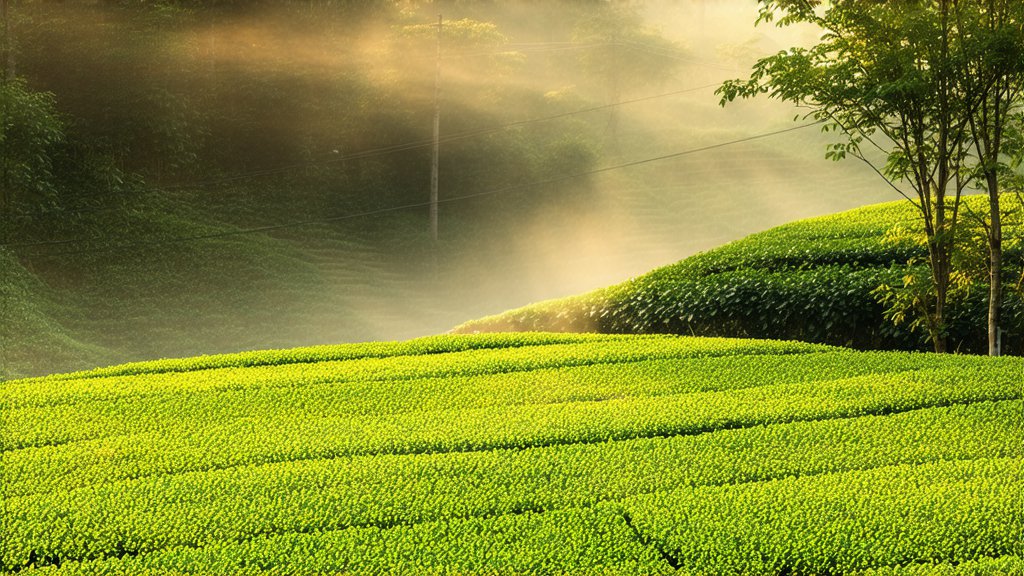
In the vast and diverse landscape of Chinese tea culture, few varieties capture the imagination and senses quite like Junshan Yinzhen, a distinguished member of the yellow tea family. This exquisite beverage, often referred to as the "Golden Elixir," boasts a rich history intertwined with China's ancient tea traditions, a unique processing method that sets it apart, and a flavor profile that is both subtle and complex. Join us on an exploration of this remarkable tea, from its historical roots to its modern-day appreciation.
Historical Background
Junshan Yinzhen, meaning "Silver Needle of Junshan," hails from Junshan County in Hunan Province, a region renowned for its favorable climate and fertile soil ideal for cultivating high-quality tea. Its origins trace back over a thousand years, during the Tang Dynasty (618-907 AD), when it was first cultivated by Buddhist monks who recognized the spiritual significance of tea in their meditation practices. Over centuries, Junshan Yinzhen evolved not only as a beverage but also as a symbol of purity, tranquility, and refined taste.
Varieties and Characteristics
Among the various types of yellow tea, Junshan Yinzhen stands out for its distinctive appearance and character. Unlike green or black teas, which undergo extensive rolling or fermentation, yellow teas like Junshan undergo a meticulous "sealing yellow" process. This involves steaming fresh leaves briefly before allowing them to yellow slowly under controlled humidity and temperature conditions. The result is a tea characterized by its slender, needle-like leaves adorned with a fine downy fuzz, reminiscent of silver threads.
The color of Junshan Yinzhen's liquor is a pale, golden yellow, reflecting its name. Its aroma is delicate yet persistent, with notes of jasmine and honey. On the palate, it offers a smooth, mellow taste with a sweet aftertaste that lingers, making each sip a journey through layers of flavor.
Processing Techniques
The art of making Junshan Yinzhen is a testament to the skill and patience required to produce such a rare and precious tea. The process begins in early spring when only the youngest, most tender buds are handpicked. These buds are then carefully steamed to halt oxidation while preserving their natural enzymes. Next comes the critical "sealing yellow" phase, where the steamed leaves are spread thinly on bamboo trays and left to yellow gradually. This step requires precise control of humidity and temperature to prevent any undesirable fermentation while allowing the leaves to develop their characteristic yellow hue.
Once the desired color and aroma have been achieved, the leaves are dried gently to remove excess moisture without compromising their integrity. The final product is a testament to the harmony between nature and human craftsmanship, encapsulated in every delicate leaf.
Tasting and Appreciation
To truly appreciate Junshan Yinzhen, one must engage in the traditional Chinese tea ceremony, which emphasizes mindfulness and respect for the tea. Begin by selecting a clear glass teapot to observe the graceful unfurling of the silver needles as they dance in hot water. Use freshly drawn, soft water heated to around 80-85°C (176-185°F) to avoid scalding the delicate leaves.
Steep the tea for approximately 2-3 minutes, allowing the flavors to fully express themselves. As you take your first sip, notice the tea's clarity and the subtle transformation from a light golden color to a more vibrant hue as it cools slightly. Inhale deeply to capture the intricate fragrance before savoring the tea on your palate. Pay attention to the initial sweetness, followed by a gentle bitterness that quickly mellows into a lasting, refreshing finish.
Junshan Yinzhen encourages slow consumption, inviting drinkers to pause between sips and reflect on the tea's journey from leaf to cup. Each session becomes an opportunity to connect with the present moment and appreciate the subtleties of this golden elixir.
In conclusion, Junshan Yinzhen represents not just a type of tea but a profound cultural experience that bridges past and present, tradition and innovation. Its history speaks volumes about China's enduring relationship with tea, while its unique processing and tasting ritual offer a gateway into understanding the depth and complexity of Chinese tea culture. For those fortunate enough to encounter this rare treasure, Junshan Yinzhen is more than a drink; it is a meditative journey through time, nature, and the artistry of tea making.